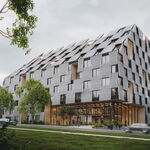King of Kensington
Senior Member
From what I understand the City of Toronto Act gives the City the right to change its ward boundaries - the Harris government had forced the City to accept dividing ridings in half. Is this riding-splitting problematic? Should things like the old municipal boundaries be more taken into account?




